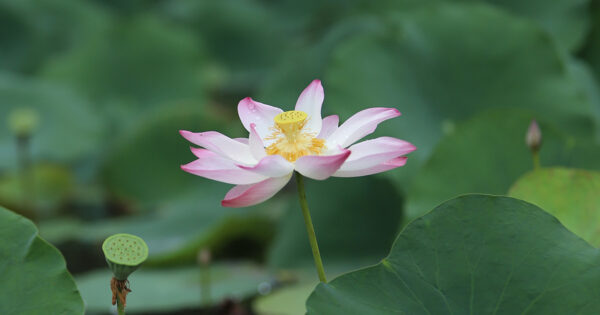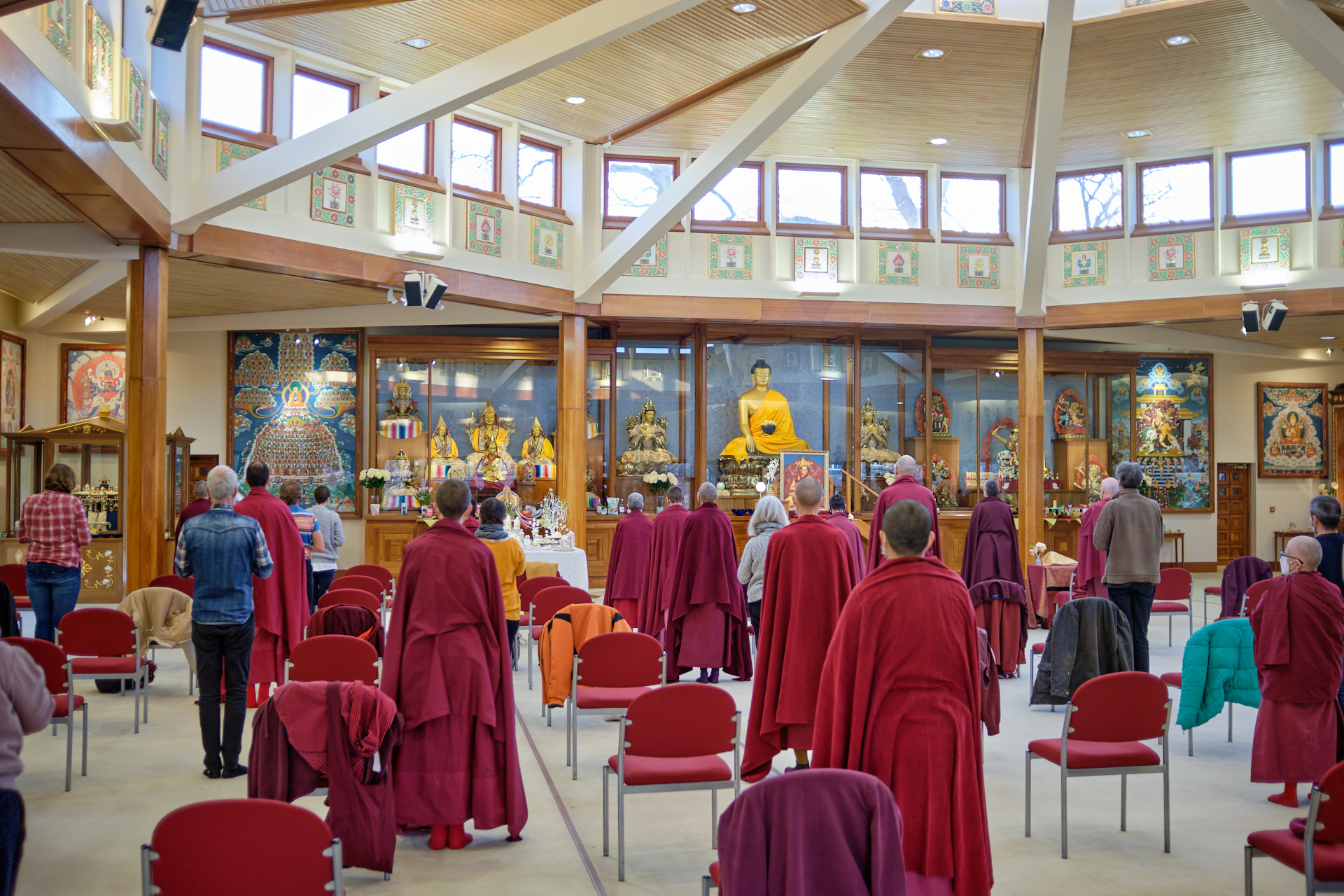What is Buddhist Prayer: a wish, an activity, an aspiration, an act of love, a form of meditation?
An Introduction to Buddhist Prayer By Jason Espada In America, and in the West in general these days, people don’t usually associate Buddhism and prayer. We usually think of Buddhism as a tradition that teaches quiet sitting meditation, and...
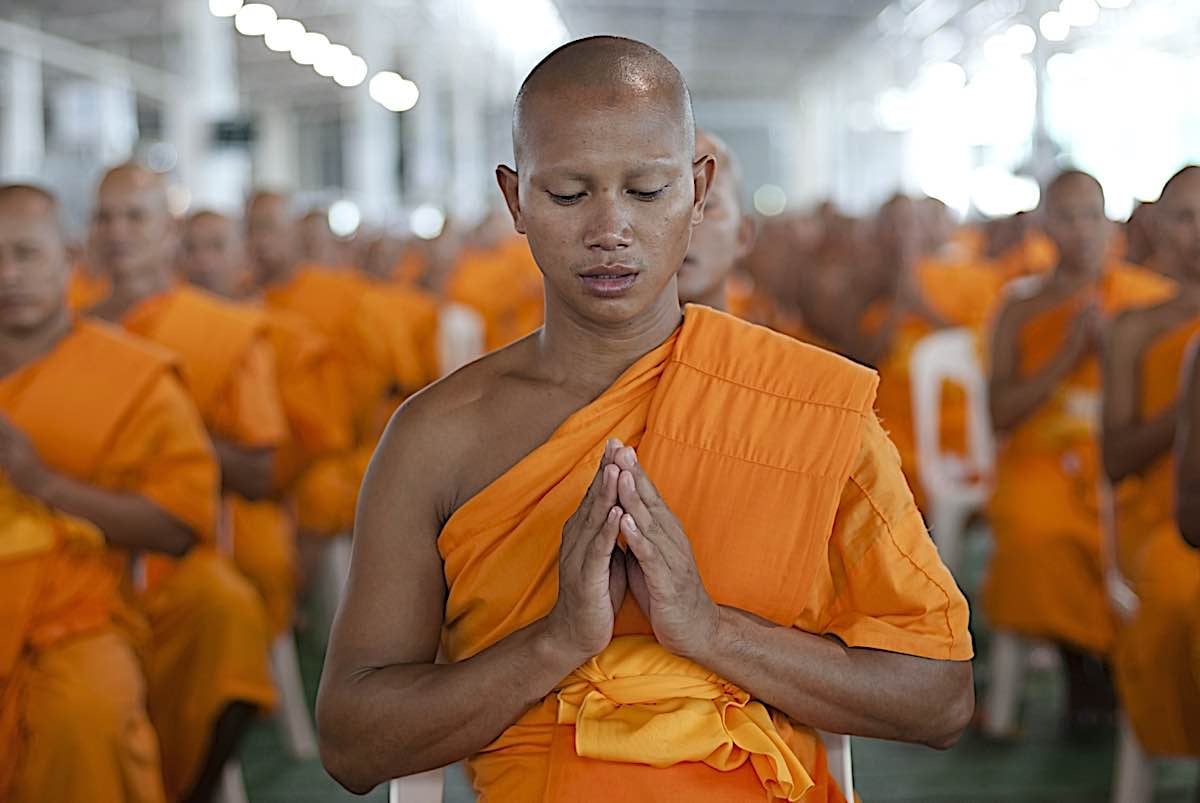
An Introduction to Buddhist Prayer
By Jason Espada
In America, and in the West in general these days, people don’t usually associate Buddhism and prayer. We usually think of Buddhism as a tradition that teaches quiet sitting meditation, and it is certainly that. Right below the surface, however, we find that there is a great deal of prayer in Buddhism.
Some schools, such as Zen, may seem to use prayer in the usual sense only sparingly, while others, such as the Tibetan tradition use a wide range of prayers for different purposes. There are prayers for healing, for cultivating compassion and other qualities; prayers to pacify difficulty, and prayers invoking the blessings of our teachers, Buddhas and Bodhisattvas, for support in all aspects of life.
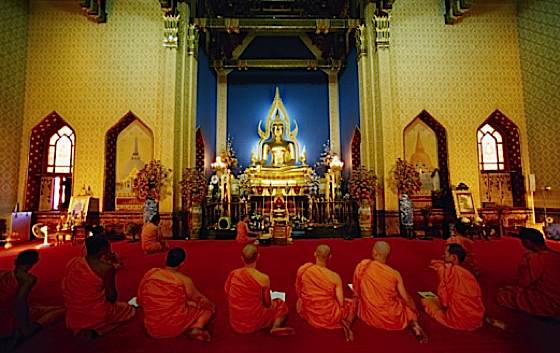 Monks praying in a temple. The word prayer isn’t truly the correct English word, but for many of us it is easy to think in these terms. When Buddhists “pray” who are we praying too? Sogyal Rinpoche teaches “We think of Buddha as not being outside self, but within.” From one point of view, even when we prostrate or pray to a “statue” we are connecting, ultimately, to our own Buddha Nature. Both the statue, and ourselves, can be understood to be empty, making the topic of prayer in Buddhism a difficult concept.
Monks praying in a temple. The word prayer isn’t truly the correct English word, but for many of us it is easy to think in these terms. When Buddhists “pray” who are we praying too? Sogyal Rinpoche teaches “We think of Buddha as not being outside self, but within.” From one point of view, even when we prostrate or pray to a “statue” we are connecting, ultimately, to our own Buddha Nature. Both the statue, and ourselves, can be understood to be empty, making the topic of prayer in Buddhism a difficult concept.To say what Buddhist prayer is, we would have to include two things: generally speaking, what Buddhism is, and, the nature of prayer.
The nature of prayer
First, as few words on the nature of prayer. What all prayer has in common, whether it is Buddhist prayer, or theistic prayer, is that prayer expresses a world view. Whether a person believes in God, or in angels, or in the intercession of Saints; or in the existence of Buddhas and Bodhisattvas, prayer shows what a person believes in.
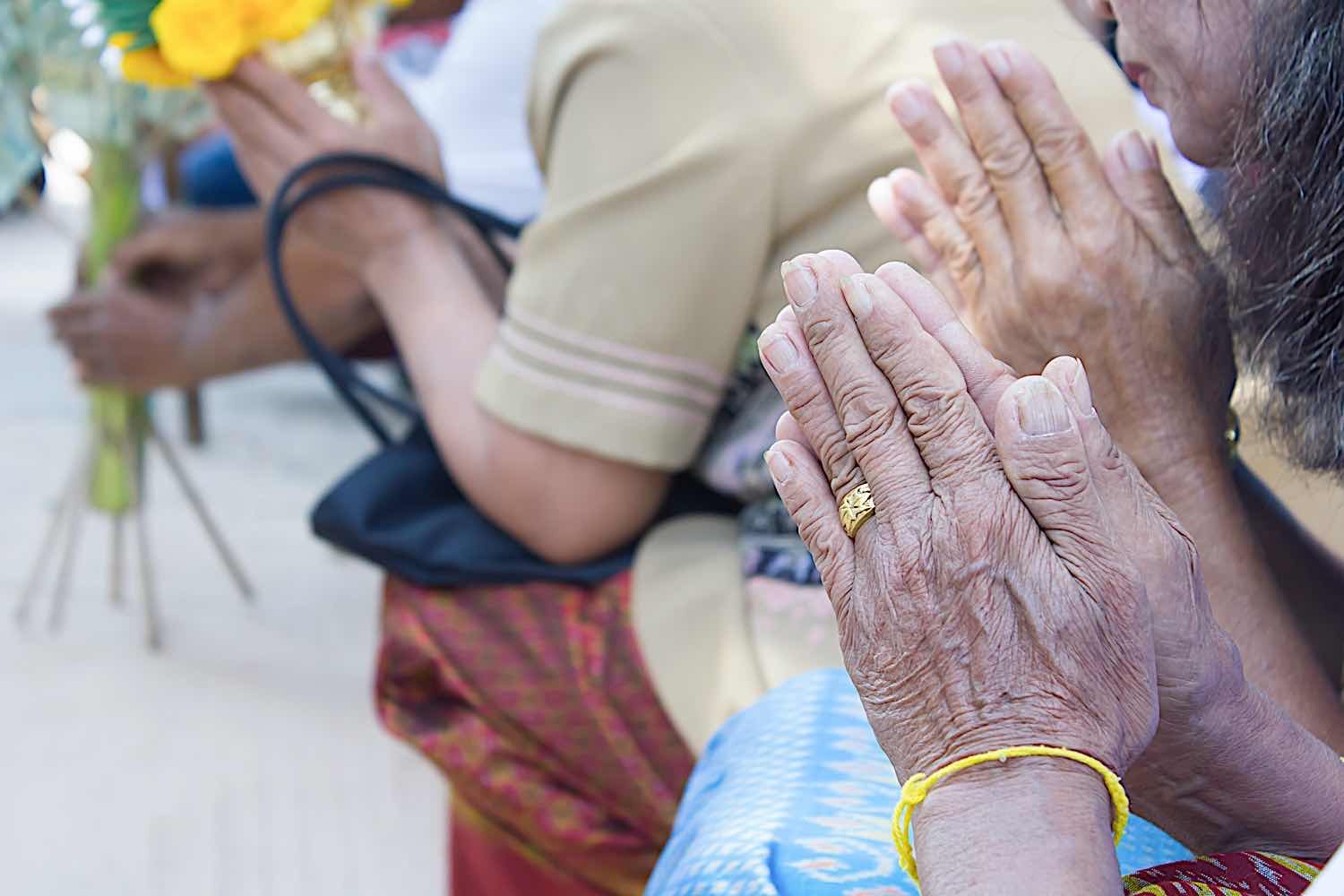 Praying with folded hands is traditional.
Praying with folded hands is traditional.
Even more simply, with some people, praying shows their belief that prayer works for them, even if they don’t understand completely why it works. We don’t need to have a lot of philosophy behind it. If a person has some experience of prayer being effective for them, that is enough to get them to pray.
A universal human activity
It’s clear that people worldwide pray for all kinds of things. It seems to be a completely universal human activity: for example, parents pray for their children, without having to be taught; people everywhere pray for good crops, and for safe journeys. I’ve heard one definition of prayer as ‘a heart-wish’. In that sense, even atheists pray.And if there is a religious world view, then that is the form in which the prayer gets expressed.
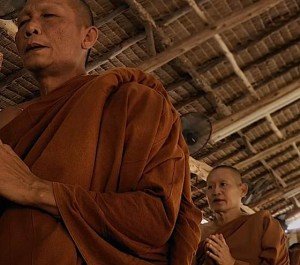 Is meditation praying? Is praying a meditation?
Is meditation praying? Is praying a meditation?
As it is usually defined, prayer is reaching beyond what we usually think of as ourselves to receive support, grace and blessings from some benevolent power in the universe. It could be for ourselves, or for another, for a child or friend, or for the world. It is entirely natural, and spontaneous. It is the human expression of some need, or of gratitude.
This particularly beautiful and lyrical prayer — “A Song of Longing for Tara” — here recited by Jason Espada, is a beautiful example of Vajrayana or Mahayana prayer:
Two kinds of prayer beyond words
In a brief overview of prayer, finally, there are two kinds of activity that need to be mentioned here, that are sometimes referred to as prayer, even though they don’t follow the most known about pattern of using words. These two are silent prayer, and what can be called prayer-in-action.
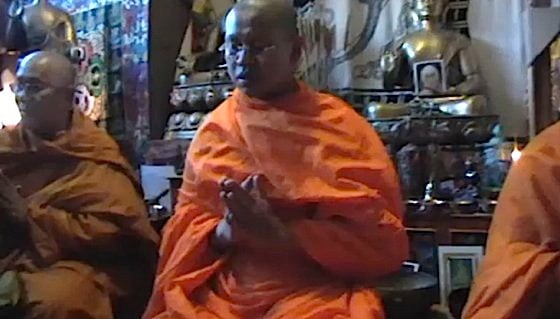 “Who do we pray to?” when we pray. In fact, are we praying at all? Sogyal Rinpoche said, “Buddhism denies the concept of God, but not the nature of God.” He goes on to explain that we all have Buddha Nature.
“Who do we pray to?” when we pray. In fact, are we praying at all? Sogyal Rinpoche said, “Buddhism denies the concept of God, but not the nature of God.” He goes on to explain that we all have Buddha Nature.Silent prayer
The term silent prayer may be familiar to those who have studied Christian contemplation. Sometimes called ‘the prayer of the heart’, or ‘practicing the presence of God’, silent prayer can be a form or adoration, of thanksgiving, or it can be sitting quietly, with receptivity, a deep listening for guidance or for the answer to some problem.
Prayer-in-action
A second type of prayer that may not usually be classified as such is sometimes called prayer-in-action. This is where it is not enough to wish for something, or to hope and pray for something with words alone, but when the opportunity arises, to sit still, or to speak, to recite, or to chant, or to move our limbs. This is inspired action, not separate from our prayers of aspiration. Here, there is a clear continuum between our thought and action. The same power flows through them, from the same original intention.
 Prayer can also be thought of as “connecting” to the world around us.
Prayer can also be thought of as “connecting” to the world around us.
In both of these, silent prayer, and in prayer in action, there is experience on a level beyond words. Such prayer-fulness is then the state of a person’s whole being, an expression of values, and an expression of their faith. Of course it will remain the case that most of what people identify as prayer uses words, but this dimension of prayer is also fully deserving of ourrecognition and respect. The deeper, more encompassing definitions will always be there, for anyone who wants to pick up on them.
The second part of introducing Buddhist prayer, after speaking of prayer in general, would have to be to say something about what Buddhism is. Buddhism is a way to live life with greater wisdom and compassion. Its teachings concern the nature of suffering, and propose a path that leads to the absolute end of suffering, and to genuine happiness. This is accomplished through meditation and insight into our nature.
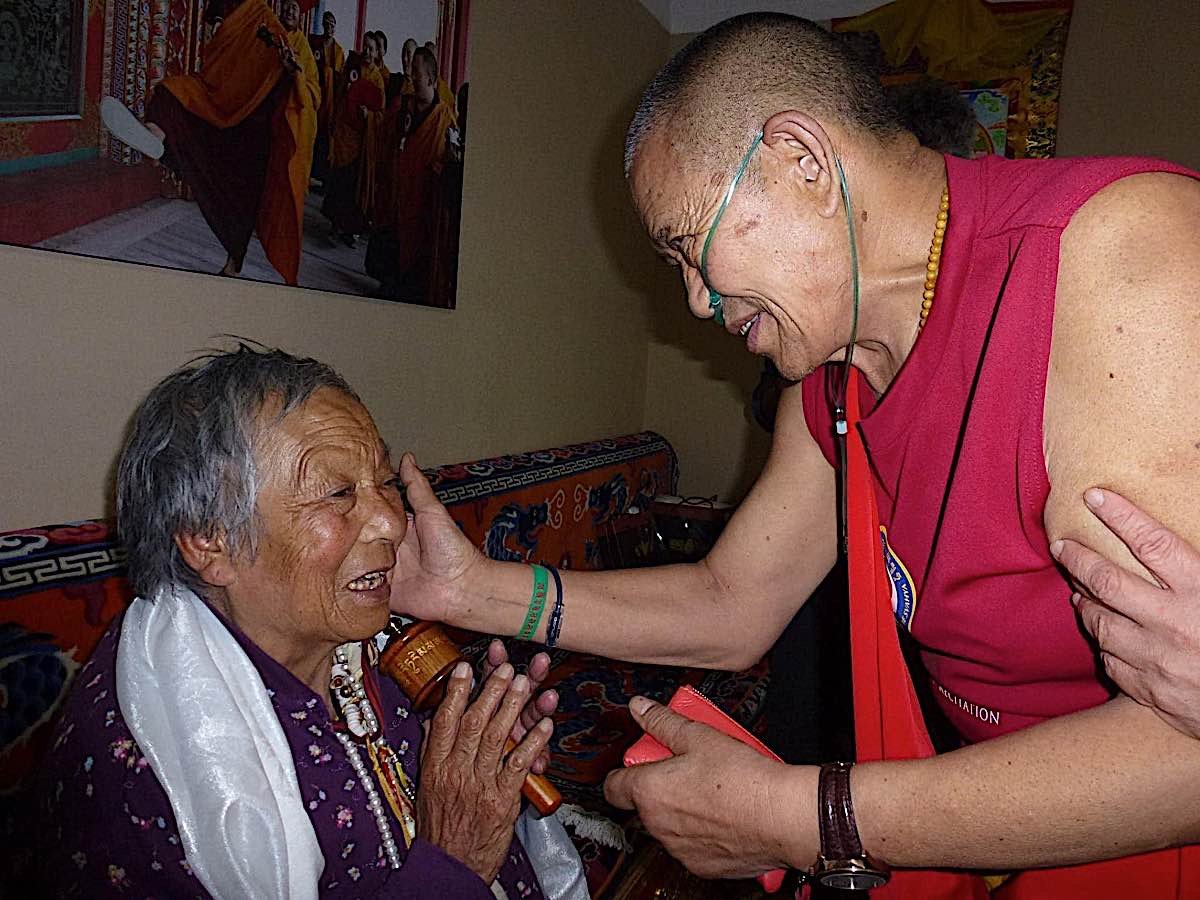 Garchen Rinpoche prays for long life and healing for a student.
Garchen Rinpoche prays for long life and healing for a student.
“Directing our thoughts in a positive direction…”
Prayer comes into the picture as soon as we start to consider the role of cultivated thought and intention in the spiritual life. Buddhism teaches training the mind, and one of the ways we can do this is by learning to direct our thoughts in a positive direction, away from harming others, and towards actions that benefit. Prayers of aspiration can set our motivation for a session of meditation, for a day, or for our whole life. Examples of this might be for a person to pray,
May I keep pure ethics today
or,
May I give up that habit
As with other kinds of prayer, the different kinds of Buddhist prayer express a set of values and a world view. Buddhist prayer, then, is prayer informed by a Buddhist world view. In every case, it is made up of a sense of where we are, and of the resources that are available to help; by what is going on and what is needed in the world and in the lives of living beings. It should be noted here that there is more than one valid, workable Buddhist world view.
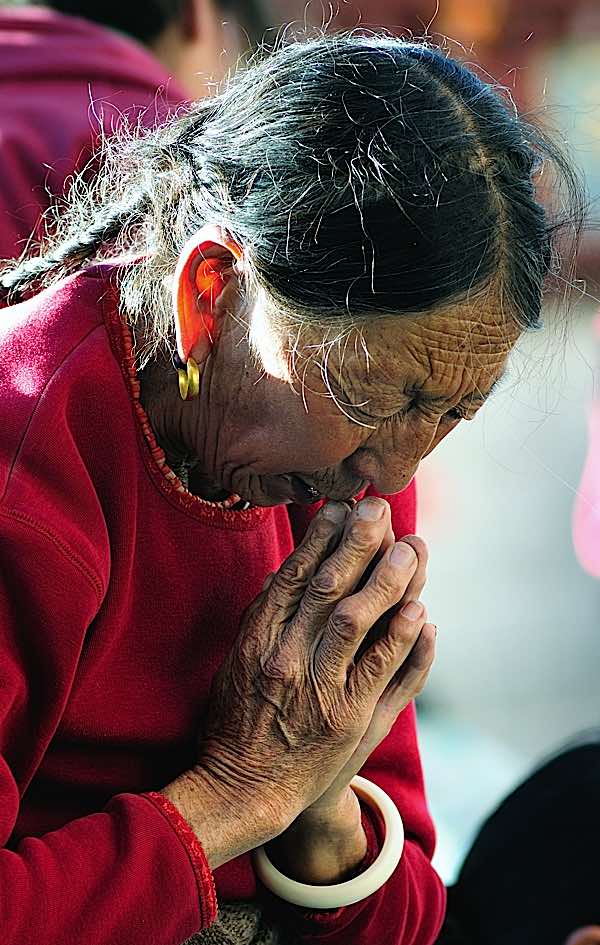 Taking refuge in the Three Jewels Buddha, Dharma and Sangha is also a prayer — it is aspirational and affirming.
Taking refuge in the Three Jewels Buddha, Dharma and Sangha is also a prayer — it is aspirational and affirming.
Beyond being theistic or non-theistic
In contrast to Western theistic prayer, Buddhism does not make use of the idea of a creator God. This is one significant difference. There are, however, many forms of Buddhism that recognize the existence of different levels of beings, such as devas, guardians, and local spirits.Many practitioners recognize and call upon the power and benevolent influence of our spiritual ancestors, present day teachers, as well as different levels of spiritually accomplished beings, the Buddhas and Bodhisattvas.
Lama Zopa Rinpoche has said,
You are not alone, because all the time there are numberless buddhas and bodhisattvas surrounding you, loving you, guiding you, that is what they do…
Practice of devotion
It may also come as a surprise to Westerners that, by sheer numbers, the great majority of people who refer to themselves as Buddhist practice what is called Pure Land Buddhism. Most of the Buddhists in Japan, Korea, and China, as well as many Tibetan Buddhists pray with great devotion to Amitabha Buddha, the Buddha of Infinite Light. Many millions of people recite his name-mantra ‘Namo Amitabha’ (homage to Amitabha) or ‘Ami-tofu’ and pray to be born after this life in his Pure Land of Sukhavati. This is regarded as being a heavenly realm, with ideal conditions for spiritual practice.
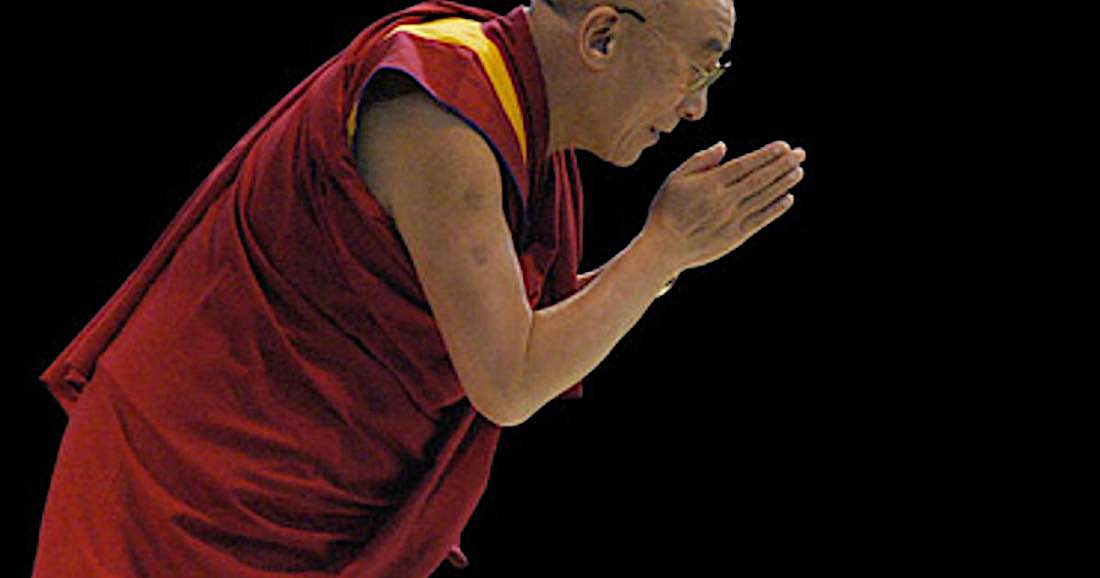 The Dalai Lama.
The Dalai Lama.
I think then that it’s not enough to refer to Buddhism as merely non-theistic, and leave it at that. It is clearly not monotheistic, but it is, I would add, grounded in spiritual realities. Perhaps a better pairing then would be theistic and recognizing a diversity of spiritual life.
Generally speaking, theistic prayer is where you view the source of benefit as existing outside of oneself, and non-theistic prayer regards the sources of benefit as existing in oneself, or both outside and inside oneself.
External or internal?
In Buddhism, it’s taught that ultimately the Buddhas and Bodhisattvas, and our own teachers are not separate from our own minds. Relatively, however, on the path, we usually experience them that way, and so we can benefit from connecting with them and relating to them within that framework, as we develop a deeper realization of our own enlightened qualities.
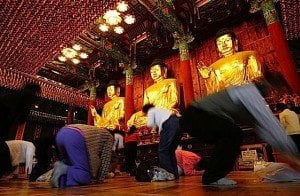 Respectful full-prostration bows combined with prayer are important to many Buddhists.
Respectful full-prostration bows combined with prayer are important to many Buddhists.
One of the ways of relating to Buddhas and Bodhisattvas is as a method of cultivation, where the ‘external’ and the internal complement each other. Here, one meditates upon a Buddha form with devotion and prayer, as a way to identify and to produce these same qualities in ourselves. The forms are used to help us to awaken our own Buddha Nature.
It’s often asked: does the deity (Buddha or Bodhisattva) have an external reality?, and answered, relatively, yes; ultimately, no (meaning that they are not separate from our fundamental nature).
The benefit to be found in prayer
The reason I would first begin by describing all Buddhist Prayer at this point as the expression of diverse people’s worldview is to try to be as inclusive as possible. The truth be told, looking at the range of what is taught and practiced as Buddhism, there is simply no one way. Some people relate to the world as having many dimensions, and many spiritually advanced beings, and others just to this one world that we more or less agree on. No matter. Many different cosmologies or world views can work when it comes to Buddhist practice, or to the activity of prayer. However our mind is, there is benefit to be found in prayer.
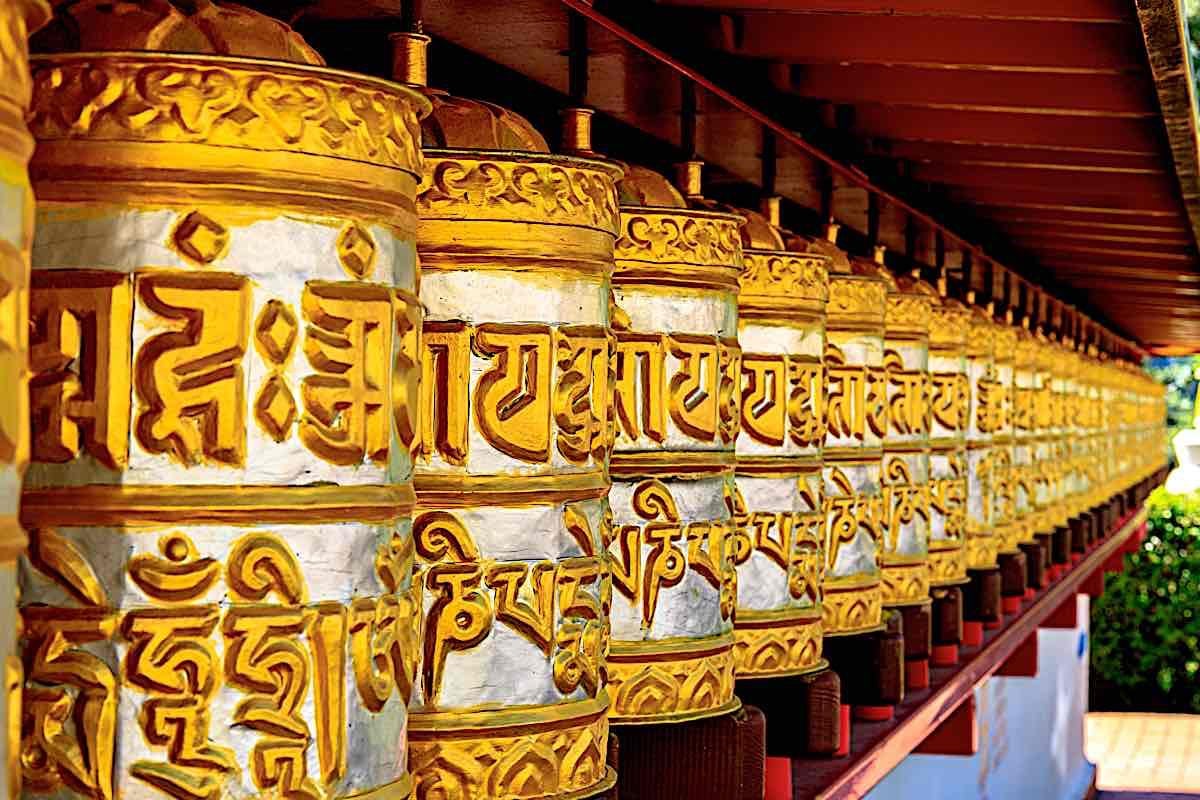 A sacred outlook. These gigantic prayer wheels are filled with millions of Buddhist Mantras. They are spun by people with faith who send the good wishes to all sentient beings — an activity prayer. Compassion and Bodhichitta are necessary in aspects of Mahayana Buddhist prayer.
A sacred outlook. These gigantic prayer wheels are filled with millions of Buddhist Mantras. They are spun by people with faith who send the good wishes to all sentient beings — an activity prayer. Compassion and Bodhichitta are necessary in aspects of Mahayana Buddhist prayer.
Take, for example, the wish,
May you have happiness
or the verses for the cultivation of loving kindness and compassion,
May all beings be happy
May all beings be free from suffering
These are purely prayers of aspiration, and no faith is required in anything, beyond recognizing the power of love and compassion, and of our own thought and motivation.
 Metta is a simple and beneficial prayer ( and meditation) with many proven benefits. Happiness is one of them. De-stressing in times of crisis is another.
Metta is a simple and beneficial prayer ( and meditation) with many proven benefits. Happiness is one of them. De-stressing in times of crisis is another.
Possibility of transformation and benefiting others
From my own point of view, more important than the philosophy of prayer, is what all these practices point to. In whatever form we engage them they indicate the possibility of working with our heart and mind, and the possibility of transformation, benefiting ourselves and others. If we think prayer is something that could help us to accomplish this, there is plenty of room to have different world views and still have it work.
One example of a prayer that can work with different Buddhist worldviews, perhaps, would be recognizing that ethical action brings happiness, and unethical or hurtful action brings misery. We can then aspire or pray to live a moral life. Then, if our world view in addition includes the existence of Buddhas and Bodhisattvas, highly realized beings that live to serve others, freeing them from suffering and bringing them happiness, or a connection to teachers, then naturally we will ask for their help and support.
May my teachers, and the Buddhas and Bodhisattvas help me to accomplish this.
Another example of a Buddhist prayer and worldview would be that elemental universal wish for our children or family to have happiness. If this is informed by an understanding of the causes of happiness as taught in Buddhism, ethics, the training of the mind or meditation, and wisdom, then that wish for them in that sense becomes a Buddhist prayer. It reflects a Buddhist worldview and understanding.
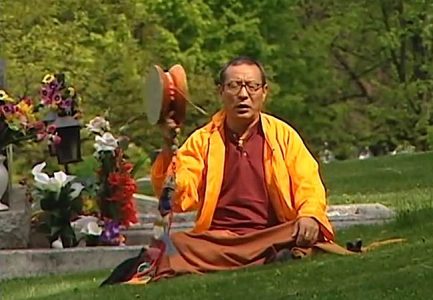 Chod in a cemetery is also a form of prayer
Chod in a cemetery is also a form of prayerAgain, if we include in our view the dimension of the existence of Buddhas and Bodhisattvas, and the blessing power of Saints and Sages, then, naturally, we reach to these sources of light and inspiration in our prayers, with the deep wish that they benefit those we pray for.
Here is a third example of what Buddhist prayer can be. By contrast, the peace of someone who has only known the effect that comes from taking a sleeping pill, and the peace of someone who has quieted the mind in meditation are very different.
When a meditator or contemplative wishes for another to know peace and happiness, they have in their mind the inner peace and joy they have known. Such prayer is informed by their experience, the result of their Buddhist study and practice.
Buddhist prayer is the expression of what is felt by Buddhists to be ultimately worthwhile in life, and here is where another level of interest enters into it, if we want to know what many Buddhists are actually aiming to do when they pray.
All Buddhist prayer is informed by a Buddhist worldview, on the nature of suffering and the path to happiness; of the preciousness of each life, and of our own potential. A fundamental prayer we can have from this perspective is
May all beings have happiness, and the causes of happiness
Then, if we are practicing taking care of our own life in the Buddhist way, by cultivating ethics, meditation and the freedom that comes with wisdom in the Buddhist sense, one result of whatever liberation we achieve is naturally a greater dedication to all others. This arises naturally – it does not have to be imposed from the outside. This is how the path unfolds.
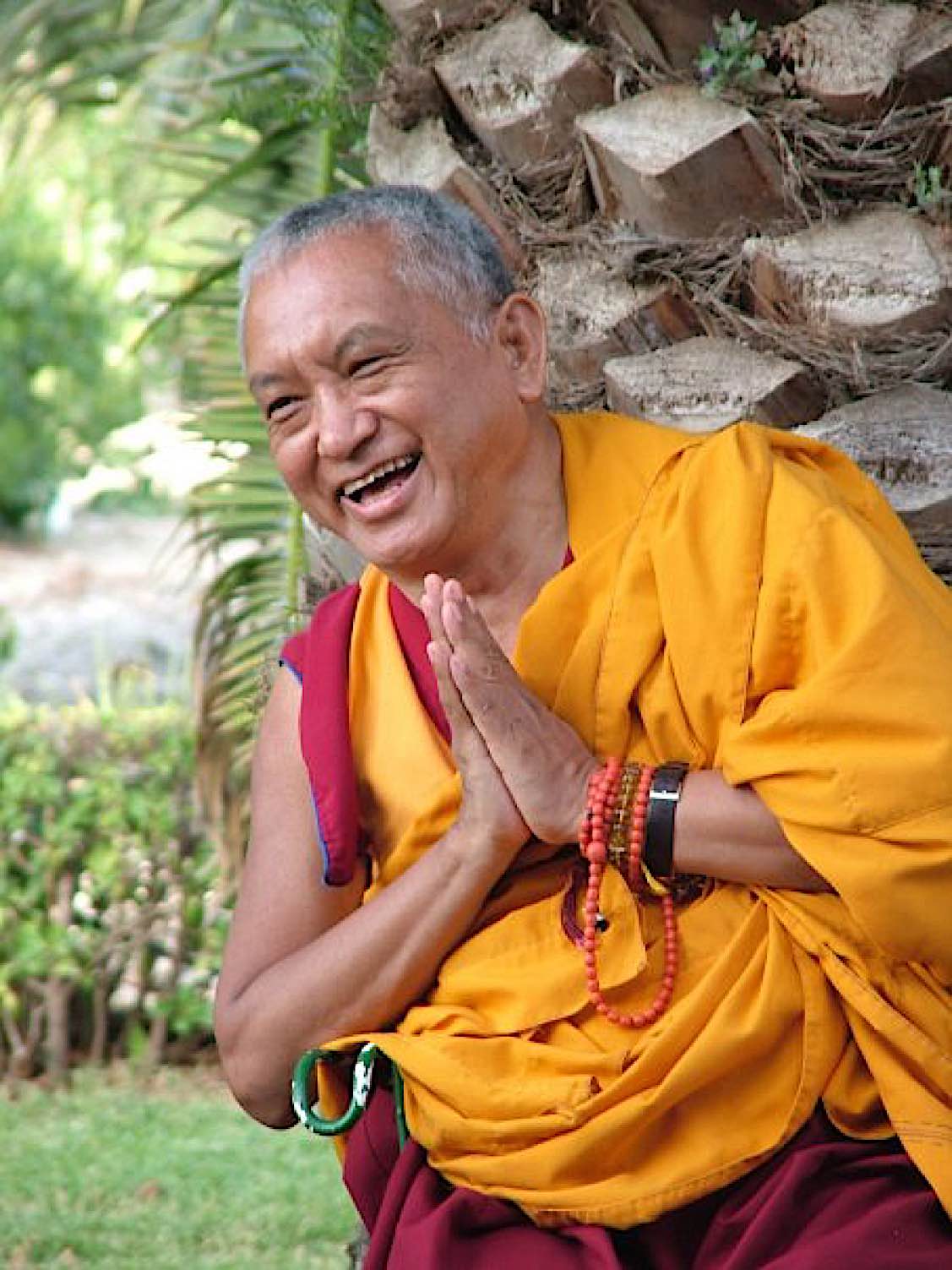 Lama Zopa Rinpoche, with hands folded in an attitude of prayer.
Lama Zopa Rinpoche, with hands folded in an attitude of prayer.
Beyond the level of obscuration and affliction, our nature is compassion. From greater freedom, and greater empathy, our compassion can emerge. We can begin to recognize the fundamental equality of all, and to live our lives in response to that.
Enter the Mahayana
What is called the Maha-yana, means the Great Way, in that, in its wish to benefit others, it aims to include all beings. A Mahayana Buddhist, in the best sense, sees that what we all need for our flourishing is something more than the material alone. What we need, ultimately, for our happiness and well being, is wisdom.
The Mahayana Buddhist Way of Life is in many ways the complete opposite of self centeredness, and of short sighted, hedonistic, materialistic culture. It is mature prayer.It is altruism. And although it includes ourself, it is living in response to the needs of the world and of all living beings. It is a willingness to give one’s life to that task of freeing all others from suffering and to bringing them all genuine happiness. Such a motivation places us in harmony with life.
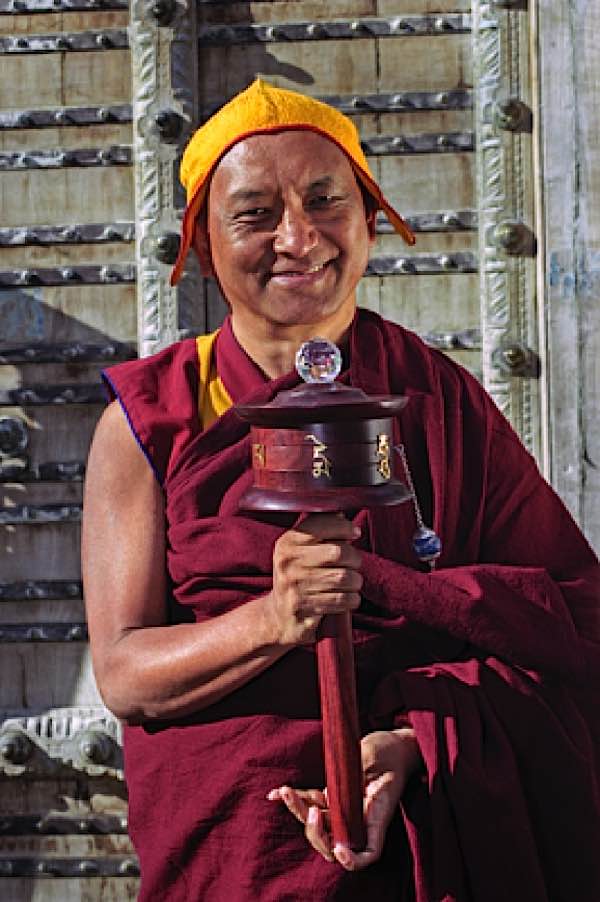 Lama Zopa Rinpoche with a microfilm hand-crafted prayer wheel containing millions of mantras. Great teachers such as Lama Zopa and Garchen Rinpoche often appear in public with “prayer wheels” — which are prined forms of prayer. For a feature on prayer wheels, see>>
Lama Zopa Rinpoche with a microfilm hand-crafted prayer wheel containing millions of mantras. Great teachers such as Lama Zopa and Garchen Rinpoche often appear in public with “prayer wheels” — which are prined forms of prayer. For a feature on prayer wheels, see>>
This perspective, of wanting to benefit all others, is more than a reflex, or a superficial emotional reaction.It is the result of contemplation, and an open-hearted response, seeing our place in the world of struggling, suffering sentient beings. As Shantideva wrote:
Although they long for happiness, they destroy the very causes of their happiness; and though they do not wish to suffer, they create the causes that bring suffering on themselves…
Such contemplations can shift the very center of our life.
Every Mahayana Buddhist, then, embraces what is called the Bodhisattva Vow as the highest ideal and aspiration, to free each and every sentient being from suffering and the causes of suffering, and to bring them all to immutable happiness. We aim all of our maturation, our thoughts and actions, prayers and meditations to that objective, of benefiting all others in every way necessary, material and spiritual.
This Bodhisattva Vow, and bodhicitta – the thought Traditionally expressed as,
May I become a Buddha in order to benefit all sentient beings
is a dependent arising. These causes and conditions come together: our perceiving the needs and seemingly endless sufferings of living beings, with compassion, and knowing a way out, naturally Vow arises from these.
Traditionally, as taught in the Tibetan Buddhism, before any practice, we set our motivation.We have the thought,
May this be for the benefit of all…
and this is the great motivation that empowers the prayers and meditations of a Mahayanist.
After that, during the practice itself, whatever it is, we aim to keep a clear continuity of intention. And at the conclusion we dedicate the merit, the positive energy of our practice, to fulfilling our purpose, for example,
By this practice, may all beings enjoy happiness, and the causes of happiness
Prayer as a path
When it comes to the activity of prayer, then, we can view Buddhist Prayer in terms of path, which is the cultivation of some motivation or quality, and in terms of fruit, which is what we give as a result of our practice.
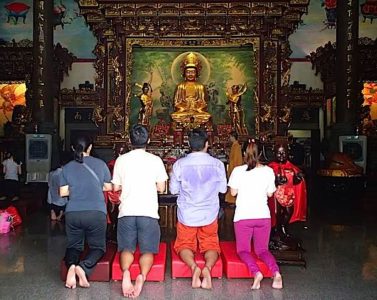 In Pureland forms of Buddhism especially, praying is a central activity — with devotion especially to Amitabha Buddha or Avalokiteshvara (Guanyin).
In Pureland forms of Buddhism especially, praying is a central activity — with devotion especially to Amitabha Buddha or Avalokiteshvara (Guanyin).
Prayer as a path can be training the mind in ethics, or in loving kindness.We can reflect and cultivate the feeling, for example:
Meeting this person tomorrow, may I have patience, and not get angry with them.May I develop the qualities that will help them as much as I can…
In some places, this is called ‘prospective memory’. As Matthieu Ricard taught, doing such meditations ahead of time that cultivate a positive quality, ‘prime’ us, or prepare us to engage with others in a better way.
Some people may wonder if prayer takes the place of meditation that calms the mind and by developing wisdom frees us from afflictions – meditation that has for millennia been regarded as the very heart of Buddhist practice. But it isn’t the case that prayer replaces meditation, rather, at its best, the practices of prayer and meditation are complementary to each other. With prayer, we direct our mind and energy, and with calm meditation that liberates we can connect with and uncover more of our resources. We are able to offer something deeper and more useful.
In its broadest sense, prayer can be considered to be another name for Buddha Activity.
 Prayer flags at a temple to Padmasambhava in Tawang district. Prayer flags are an activity form of prayer in Tibetan Buddhism — stringing them up is a form of meritorious activity and symbolizes our prayers and aspirations being carried on the wind to benefit all sentient beings.
Prayer flags at a temple to Padmasambhava in Tawang district. Prayer flags are an activity form of prayer in Tibetan Buddhism — stringing them up is a form of meritorious activity and symbolizes our prayers and aspirations being carried on the wind to benefit all sentient beings.
Prayer as fruit
Buddhist Prayer as fruit then can be offering our light, and our peace to the world. This, at its best, can be a whole way of life for a Mahayana Buddhist. A Bodhisattva delights in benefiting others, seeing this as the most meaningful use of our life. No matter how difficult it is, no matter how long it takes, no matter what the cost.
The scope of this work is expressed in The King of Prayers, which has a verse that reads:
Limitless is the extent of space
Limitless is the number of sentient beings
And limitless are the karma and delusion of beings
Such are the limits of my aspirations.
And by Shantideva, who has the prayer:
For as long as space endures
and for as long as living beings remain,
until then, may I too abide,
to dispel the misery of the world
The Lam Rim Dedication has this verse:
With my heart going out with great compassion
In whatever direction the most precious teachings have not yet spread,
or once spread have declined,
May I expose this treasure of happiness and aid
Cultivating this path, we become more able to intrepidly engage and to guide others.
In nearly every school of Buddhism, understanding the mind has a central place. The power of thought, and in particular the power of intention is expressed in the line by Lama Zopa Rinpoche, that:
All of existence depends on the tip of a wish.
 Lanterns carry the “wishes” of celebrators to the heavens — an activity form of Buddhist prayer. Nothing is more beautiful than the floating lanterns lifting into the night sky.
Lanterns carry the “wishes” of celebrators to the heavens — an activity form of Buddhist prayer. Nothing is more beautiful than the floating lanterns lifting into the night sky.
Thought has the power to shape lives
Thought is the power we use to shape our lives. ‘The tip of a wish’ here refers to our motivation. One teaching says if the root of a tree is healing, the branches, leaves, flowers and fruit will all be healing. Again, it is brought out that our motivation is the deciding factor in the quality of our work, our spiritual practice, and in what we give to the world.
As with meditation and mantra practice, an individual’s prayer can become a cultivated power. We don’t know what we are capable of, and what effect our own meditation and prayer can have until we make an effort.
It’s also true thatthe Traditional prayers we have received can be a great aid to our lives. Prayers that have been recited by many people for generations, with concentration and devotion, have built up tremendous power over time, and if we can connect with them, they can help us a great deal.
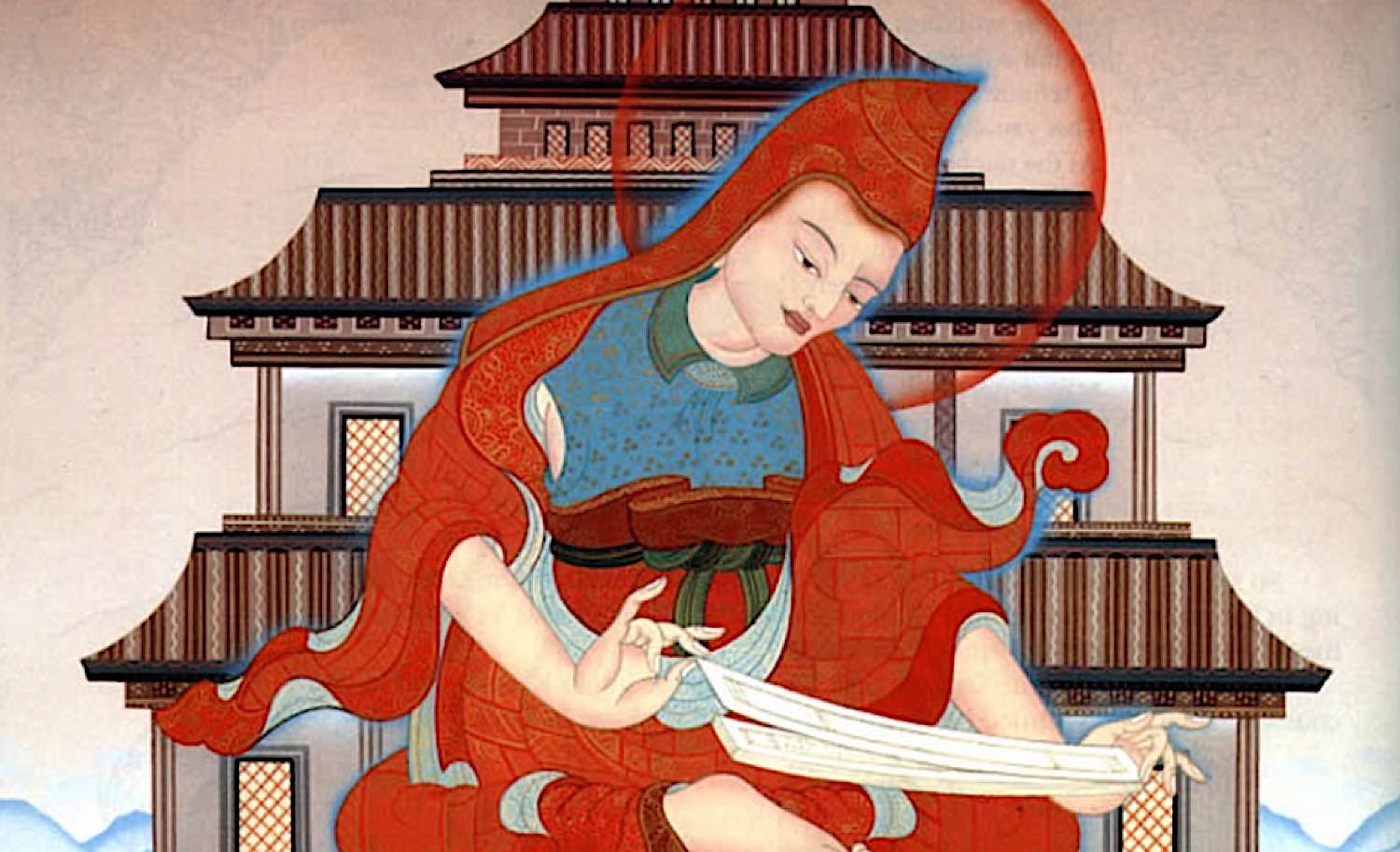 Shatideva.
Shatideva.
Add to this the fact that many of the Traditional prayers were written by people who are regarded as saints, such as Shantideva, Atisha, Tang Tong Gyalpo, and Tsong Khapa, as well as modern teachers such as Thich Nhat Hanh, Dudjom Rinpoche and Lama Zopa Rinpoche. As such, they are rich with insight, and blessings.
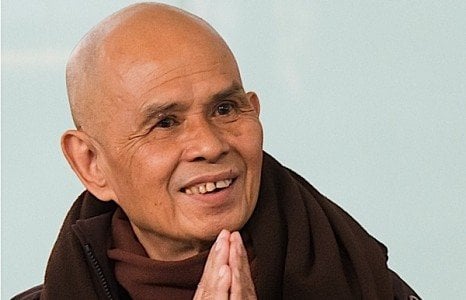 The most Venerable Thich Nhat Hanh.
The most Venerable Thich Nhat Hanh.
Together with our own practice of having a good heart, meditation and prayer, we can gain the greatest benefit from Traditional prayers.
For some, to be a self defined ‘person of prayer’ can be a complete way of life, responsive and awake. Prayer can connect us to the Divine. It affirms our connection with each other. It can engage our creativity in the moment, connect us to Traditions, and help us to meet both suffering and joy. Prayer gives us a means to respond, and to offer, if not an immediate solution to problems, then at least solace, and hope, and the best we can give at this time, not turning away in spirit.
Seeing for ourselves the great value and effectiveness of prayer, who would not want to engage its practice in some form? It is completely natural to want to do so, especially when we see more and more of the needs that exist, and what can be done with prayer. We can direct our mind to virtue, link up with and draw from sources of great benefit, and share that with all.
May all beings benefit.

 FrankLin
FrankLin 









